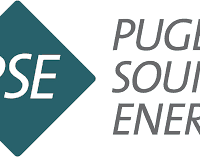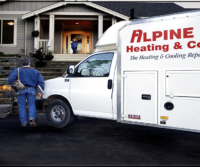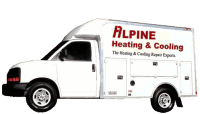
If you smell gas or suspect that you have a natural gas leak, leave the area immediately and call PSE at 1-888-225-5773 or dial 911.
How to know you have a gas leak
Smell
In its natural state, natural gas is odorless, tasteless and non-toxic. But because it’s also flammable, PSE adds a distinctive sulfur or “rotten egg” smell to the gas that’s delivered to your home or business. If you’re unfamiliar with this odor (the smell of gas), test the “scratch and sniff” spot inside of the gas safety brochure.
Look and listen
You may also see or hear signs of a gas leak, including:
- Bubbles rising in a puddle or other pool of liquid
- Dust or dirt blowing from a hole in the ground
- Dead or dying vegetation in unexpected locations
- Hissing (small perforation) or roaring (large break)
Natural gas versus carbon monoxide
Both natural gas and carbon monoxide (CO) are naturally odorless and potentially harmful. But unlike natural gas, CO has no added scent to help you detect exposure.
To learn more about CO, visit Carbon Monoxide Safety .
What to do
If you detect or even suspect that you have a natural gas leak:
- Leave the area immediately. If you’re indoors, evacuate the building.
- Call PSE at 1-888-225-5773 or call 911, but don’t use your landline phone, which may cause a spark.
- Don’t do anything else that might create a spark, including flipping any switches on or off.
- PSE will immediately dispatch a technician to check that your area is safe, at no charge.
Brochure request
To request a gas safety brochure, call 1-888-225-5773.

Consider Making a Change to Your HVAC System if Any of the Following Statements Apply
Some of your rooms are too hot or cold. Inadequate air sealing or insufficient insulation could be the cause. No matter how efficient your heating and cooling system is, if your home is not adequately sealed and insulated, you will not be as comfortable, and your system will have to work harder. Your home has humidity problems, excessive dust, or rooms that never seem to get comfortable. Leaky or poorly insulated ductwork might be the cause and reason to change your HVAC system.
Your equipment needs frequent repairs, and your energy bills are going up. In addition to the rise in energy costs, the age and condition of your heating and cooling equipment may have caused it to become less efficient. Call Alpine Heating & Cooling to take a look at your current system. Alpine can offer you solutions that work for your budget.
Your heating and cooling equipment is more than ten years old. Consider replacing it with newer, more efficient equipment. And remember, high-efficiency levels begin with ENERGY STAR.
You leave your thermostat set at one constant temperature. You could be missing a great energy-saving opportunity. You can set a programmable thermostat to adjust your home’s temperature at times when you’re regularly away or sleeping.
You used EPA’s ENERGY STAR Home Energy Yardstick to compare your household’s energy use to others across the country, and your score is below five. That means you’re using and paying for more energy at home than most Americans. Visit the ENERGY STAR Home Advisor to get recommendations for home improvement projects that will increase your score by improving your home’s energy efficiency and comfort.

Nothing is more frustrating than when your HVAC system stops working when you need it most, causing you to consider an emergency air conditioning and furnace repair or replacement. Not only is it stressful for you and your family to be without air conditioning or heat, but it can also be a financial strain. There are a few things you can do, however, before calling Alpine Heating & Cooling.
Emergency Air Conditioning and Furnace Repair Checklist
1: Check your furnace’s air filter – if you have not replaced or cleaned it in a while, you may want to purchase a new one, since a dirty filter can restrict airflow through your home.
2: Check your circuit breakers – the breaker switch may have tripped or shut off by accident. It is important to keep in mind that a tripped HVAC breaker may indicate a more serious issue, so schedule an inspection with us immediately.
3: Make sure the vents in your home are not obstructed – Blocked or closed vents can limit the airflow through your home.
4: Check the thermostat – if your thermostat uses a battery, it could need to be changed. You can also check to see if there is dust or dirt in the thermostat by removing the faceplate. If there is dust or dirt, use a can of compressed air to gently remove it. Also, frequently changing the temperature on the thermostat can cause the compressor in your system to overheat and shut down. To avoid this, be patient once you set your desired temperature. The system could take up to five minutes for the HVAC system to turn on.
If after going through this emergency HVAC repair checklist and your unit is still not functioning properly, it may be time to call us. A malfunctioning HVAC system could drive up your energy costs along with the expensive emergency furnace and air conditioning repairs. Time is of an essence. Alpine Heating & Cooling will travel to your home in our Skagit Valley service area to assess the HVAC system and create an estimate for the repair and complete the repair.

Maintain your HVAC equipment to prevent future problems and unwanted costs. Keep your cooling and heating system at peak performance by having Alpine Heating and Cooling do annual pre-season check-ups. We get busy once summer and winter come, so it’s best to check the cooling system in the spring and the heating system in the fall. To remember, you might plan the check-ups and spring maintenance around the time the daffodils starting blooming for the La Conner Daffodil Festival and in the fall around the Festival of Family Farms.

A Typical Spring Maintenance Check-up Should Include the Following
- Check thermostat settings to ensure the cooling and heating system keeps you comfortable when you are home and saves energy while you are away.
- Tighten all electrical connections and measure voltage and current on motors. Faulty electrical connections can cause unsafe operation of your system and reduce the life of major components.
- Lubricate all moving parts. Parts that lack lubrication cause friction in motors and increases the amount of electricity you use.
- Check and inspect the condensate drain in your central air conditioner, furnace and/or heat pump (when in cooling mode). A plugged drain can cause water damage in the house and affect indoor humidity levels.
- Check controls of the system to ensure proper and safe operation. Check the starting cycle of the equipment to assure the system starts, operates, and shuts off properly.
Cooling Specific
- Clean evaporator and condenser air conditioning coils. Dirty coils reduce the system’s ability to cool your home and cause the system to run longer, increasing energy costs and reducing the life of the equipment.
- Check your central air conditioner’s refrigerant level and adjust if necessary. Too much or too little refrigerant will make your system less efficient increasing energy costs and reducing the life of the equipment.
- Clean and adjust blower components to provide proper system airflow for greater comfort levels. Airflow problems can reduce your system’s efficiency by up to 15 percent.
Heating Specific
- Check all gas (or oil) connections, gas pressure, burner combustion and heat ex-changer. Improperly operating gas (or oil) connections are a fire hazard and can contribute to health problems. A dirty burner or cracked heat ex-changer causes improper burner operation. Either can cause the equipment to operate less safely and efficiently.
Actions To Do Yourself
- Inspect, clean, or change air filters once a month in your central air conditioner, furnace, and/or heat pump. Your contractor can show you how to do this. A dirty filter can increase energy costs and damage your equipment, leading to early failure.
With all of the severe watches and warnings this winter in Skagit County, you may need help fast with your HVAC system! The freezing temperatures are expected to stick around. Skagit County has seen 2-6 inches of snowfall overnight Sunday and the snow will not be melting for several days. If you are having issues with your heating system, we can provide fast service.
Are you a new home owner in Anacortes, Burlington, Mount Vernon, La Conner or surrounding areas in Skagit county? If so, you understand how much those utility bills can impact your budget. The average household spends more than $2,200 a year on energy bills, with nearly half of this going to heating and cooling costs. It’s important to make smart decisions about your home’s heating, ventilating, and air conditioning (HVAC) system that can help save on energy costs, improve your overall comfort at home, and help fight global warming.
 Did you know the energy used in the average house is responsible for twice as many greenhouse gas emissions as the average car? When power plants burn fossil fuels to make electricity,they release greenhouse gases. By using less energy at home, you help reduce the emissions that contribute to global warming. ENERGY STAR is the government-backed program that helps us all save money and protect our environment with energy-efficient products and practices. Whether you are looking for recommendations about energy-efficient equipment, getting a quality installation, HVAC maintenance, or ways to make your heating and cooling system operate more efficiently, EPA’s ENERGY STAR program can help!
Did you know the energy used in the average house is responsible for twice as many greenhouse gas emissions as the average car? When power plants burn fossil fuels to make electricity,they release greenhouse gases. By using less energy at home, you help reduce the emissions that contribute to global warming. ENERGY STAR is the government-backed program that helps us all save money and protect our environment with energy-efficient products and practices. Whether you are looking for recommendations about energy-efficient equipment, getting a quality installation, HVAC maintenance, or ways to make your heating and cooling system operate more efficiently, EPA’s ENERGY STAR program can help!
Consider giving Alpine Heating and Cooling a call if any of these statements apply to you:
- Some of your rooms are too hot or cold.
- Your home has humidity problems, excessive dust, or rooms that never seem to get comfortable.
- Your equipment needs frequent repairs and your energy bills are going up.
- Your heating and cooling equipment is more than 10 years old.
- You leave your thermostat set at one constant temperature.
- You used EPA’s Energy Star Home Energy Yardstick to compare your household’s energy use to others acress the country and your score is below five.

1. Study up — Find out about license and insurance requirements for contractors in your state. And before you call a contractor, know the model of your current system and its maintenance history. Also make note of any uncomfortable rooms. This will help potential contractors better understand your heating needs.
Tip: Alpine Heating and Cooling License and Insurance Information
2. Ask for referrals — Ask friends, neighbors, and co-workers for contractor referrals. You can also contact local trade organizations for names of members in your area.
Tip: Alpine Heating and Cooling is a proud member of the Burlington Chamber of Commerce
3. Call references — Ask contractors for customer references and call them. Ask about the contractor’s installation or service performance, and if the job was completed on time and within budget.
Tip: Check out Alpine Heating and Cooling reviews.
4. Find special offers — A heating and cooling system is one of the largest purchases you’ll make as a homeowner. Keep your costs down by checking around for available rebates on energy-efficient ENERGY STAR qualified heating and cooling equipment.
Tip: Check out Rebates for Washington State Homeowners
5. Look for ENERGY STAR — ENERGY STAR qualified products meet strict energy efficiency guidelines set by the U.S. Environmental Protection Agency and offer significant long-term energy savings. Alpine Heating and Cooling can show you calculations of savings for ENERGY STAR heating and cooling equipment.
6. Expect a home evaluation — Alpine Heating and Cooling will spend significant time inspecting your current system and home to assess your needs. A bigger system isn’t always better; Alpine will size the heating and cooling system based on the size of your house, level of insulation, and windows. Alpine Heating and Cooling will inspect your duct system (if applicable) for air leaks and insulation and measure airflow to make sure it meets manufacturers specifications.
7. Get written, itemized estimates — When comparing contractors’ proposals (bids), be sure to compare cost, energy efficiency and warranties. A lowest price may not be the best deal if it’s not the most efficient because your energy costs will be higher.
8. Get it in ink — Sign a written proposal with a contractor before work gets started. It’ll protect you by specifying project costs, model numbers, job schedule and warranty information.
9. Pass it on — Tell friends and family about ENERGY STAR. Almost one-quarter of households knowingly purchased at least one qualified product last year, and 71% of those consumers say they would recommend ENERGY STAR to a friend. Spread the word, and we can all make a big difference.
10. Get the ENERGY STAR Guide.
Tip: Click here for the Guide to Energy Efficient Cooling and Heating

Get the most from your hard-earned energy dollars in Skagit Valley. Most of these tips will cost you nothing except a change in lifestyle habits.
Ensure proper airflow
Insulate ducts, change furnace filters and make sure vents and ducts flow freely.
Adjust thermostats
Set your thermostat to your personal comfort zone and when you are away from home, reduce the temperature by 5-8 degrees Fahrenheit. For homes with elderly people or children, warmer temperatures are recommended.
Install a programmable setback thermostat
This can be a good investment in homes heated and cooled with central forced-air systems. Taking the time to program to match your personal habits will save money.
Conserve water, while saving money and energy
Turn down your water heater to 120° F to reduce your heating bills, install low-flow shower heads and replace faucet washers, and take quick showers instead of baths.
When doing laundry…
Use cold water in your wash and rinse cycles. And, always run full loads of laundry instead of washing a few pieces of clothing at a time.
Check your dishwasher’s setting
Some dishwashers offer a water-saving setting or an energy-saving drying option. Check to see if your dishwasher has these options and start using yours today!
Use your drapes.
Close drapes on hot summer days to keep the heat outside. On winter days leave them open to absorb sunlight. Always close drapes at night to keep your home’s heat inside.
Use caulk and weather stripping
Both caulk and weather stripping offer inexpensive and efficient ways to lower your heating bill. They can keep out wind, moisture, dust, and noise.
Insulate your home
For an effective energy-saving investment, and for the greatest energy savings, consider adding insulation. Ceiling insulation can save up to 30 percent on fuel bills, depending on the R-value. Contact a qualified insulation contractor for costs on insulating ceilings, walls, and floor spaces.
Have your furnace serviced once a year
A tune-up inspection for your natural gas furnace is the best way to ensure your furnace is at peak operating efficiency. Contact Alpine Heat to schedule your tune-up!
Water heaters
Replace old water heaters with models that have a Uniform EnergyEnergy_Star Factor (UEF) rating of 0.65 or higher. For additional information on high-efficiency water heaters, check out the products on the ENERGY STAR® website at www.energystar.gov.
All of the above are helpful ideas you can do around your home to lower your gas bill.


